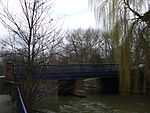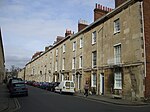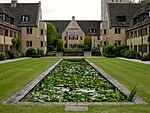Worcester College, Oxford

Worcester College is one of the constituent colleges of the University of Oxford in England. The college was founded in 1714 by the benefaction of Sir Thomas Cookes, 2nd Baronet (1648–1701) of Norgrove, Worcestershire, whose coat of arms was adopted by the College. Its predecessor, Gloucester College, had been an institution of learning on the same site since the late 13th century until the Dissolution of the Monasteries in 1539. Founded as a men's college, Worcester has been coeducational since 1979. The Provost is David Isaac, CBE who took office on 1 July 2021As of 2018, Worcester College had a financial endowment of £41.9 million.Notable alumni of the college include the media mogul Rupert Murdoch, television producer and screenwriter Russell T Davies, US Supreme Court justice Elena Kagan, Fields Medalist Simon Donaldson, and novelist Richard Adams.
Excerpt from the Wikipedia article Worcester College, Oxford (License: CC BY-SA 3.0, Authors, Images).Worcester College, Oxford
Walton Street, Oxford City Centre
Geographical coordinates (GPS) Address Website External links Nearby Places Show on map
Geographical coordinates (GPS)
| Latitude | Longitude |
|---|---|
| N 51.754971 ° | E -1.263701 ° |
Address
Worcester College
Walton Street
OX1 2HB Oxford, City Centre
England, United Kingdom
Open on Google Maps









